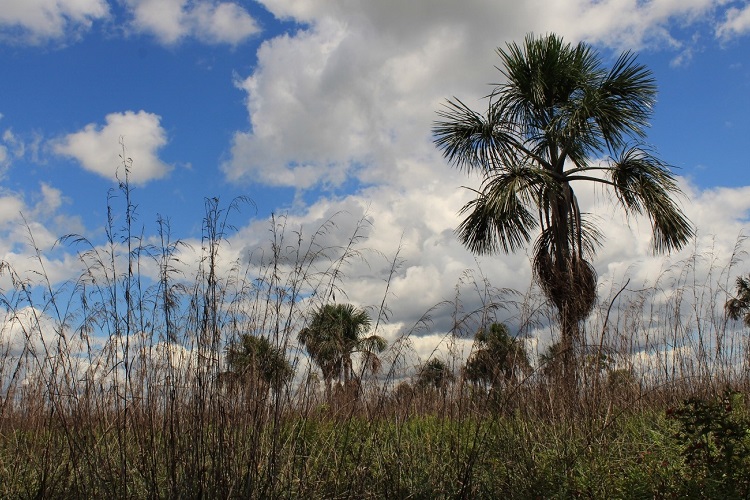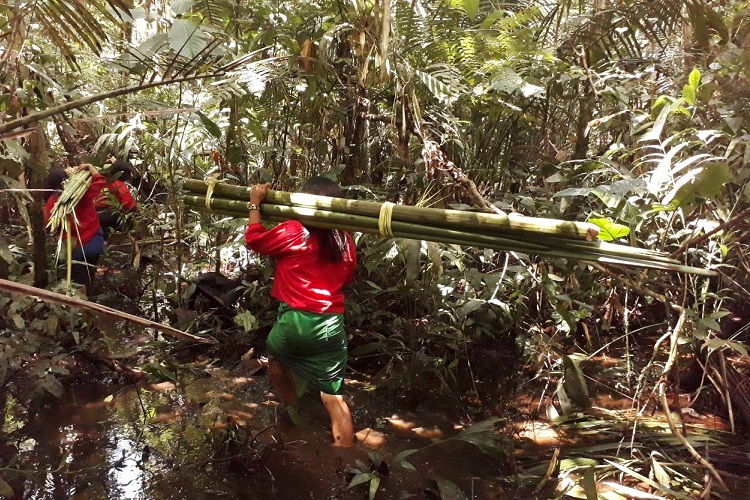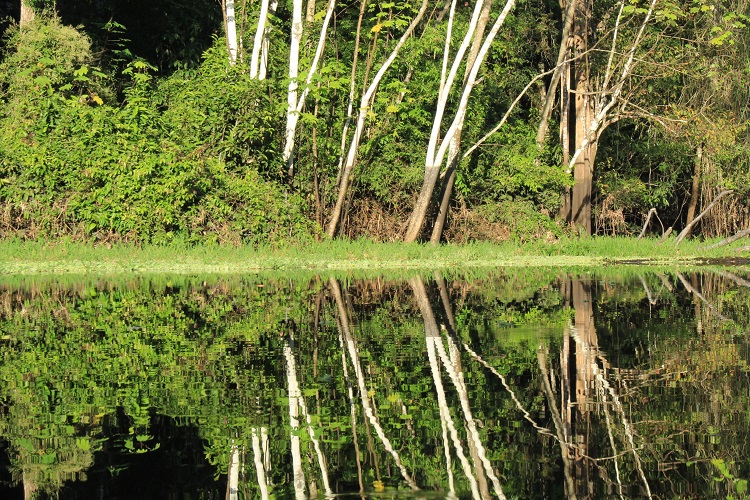From steaming swamp to blanket bog: peatlands exhibition

A touch of the tropics will be coming to the St Andrews Botanic Garden this month (from Saturday 14 August) with an exhibition of photographs from the University of St Andrews featuring the peatlands of the Amazon.
Academics in the School of Geography and Sustainable Development at the University, working in collaboration with the Botanic Garden and with funding from the British Ecological Society and The Leverhulme Trust, have curated the exhibition of photographs that take the viewer on a tour of the steaming swamps of the Peruvian peatlands – From steaming swamp to blanket bog.
The selected photographs were taken by members of the Tropical Wetlands Consortium, a team of researchers from the Universities of St Andrews, Edinburgh and Leeds, and the Instituto de Investigaciones de la Amazonía Peruana (IIAP) (Institute for Research on the Peruvian Amazon), across ten years of fieldwork in Peru’s peatlands. The exhibition explores three key themes: ecosystems – highlighting the “ecosystem engineers” responsible for carbon storage; fieldwork – describing experiences of data collection in the swamps; and people – illuminating the communities living in and activities associated with the peatlands.

Associate Lecturer in the School of Geography and Sustainable Development at St Andrews, Dr Lydia Cole, explained why peatlands are so important: “Peatlands are a distinctive type of ecosystem where the surface vegetation contributes to, and lives on top of, layers of accumulating peat.
“Peat is made up of leaves, roots and partially decomposed organic matter, which builds up under waterlogged conditions. Over hundreds to thousands of years, a thick layer of carbon-rich peat accumulates.
“With climate change a key challenge faced by our global society, conserving the carbon stored in peatlands is becoming an international priority for mitigation efforts.”
The Tropical Wetlands Consortium brings together a multidisciplinary team of researchers who aim to understand the past and present sensitivity of these important ecosystems to environmental and human-driven change using a range of techniques, including palaeoecology, ecosystem monitoring, biodiversity assessment, participatory mapping and vegetation modelling, in order to support their sustainable management.
Dr Cole, along with colleagues from Geography and Sustainable Development, Dr Katherine Roucoux and Dr Althea Davies, and other members of the Consortium, are measuring and mapping the distribution of carbon within the Peruvian Amazon peatlands, the biodiversity they contain and their long-term dynamics. As many of the photographs highlight, they are also working with colleagues to explore the value, meaning and cultural importance of the peatlands to the communities who live there.

The photographs in the exhibition have been selected to provide an insight into not only these peatland ecosystems and the people who live in and around them, but also the experience of carrying out research in these carbon-rich environments.
Dr Roucoux explained why studying the Peruvian peatlands is so important to Scotland: “Peatlands make up more than 20 percent of the land area in Scotland, the most common type being blanket bog, where layers of peat carpet the bedrock, forming waterlogged, mossy and shrubby landscapes.
“In the Peruvian Amazon, peatlands look very different as they are generally forested and often flooded; they are the archetypal ‘swamp’. More than 80 percent of Scotland’s peatlands are thought to be degraded, whilst Peru’s Amazon peatlands are mostly still intact.”
Studying the Peruvian peatlands will help researchers to understand more about how these important ecosystems function and how communities depend on and manage them. The exhibition encourages visitors to learn about unfamiliar peatlands and look with fresh eyes at the importance of Scotland’s own peatlands.
In addition to the physical exhibition, a virtual gallery will house the photographs and captions to provide online access. As well as the images, the virtual gallery will contain more information on the exhibition, along with some educational materials for children.
The website will also be available in Spanish and will remain online after the exhibition closes at the Botanic Garden at the end of October 2021. When accessibility improves in Peru and Covid-cases stabilise, colleagues from IIAP plan to display a Spanish-language version of the exhibition in a National Reserve in the Amazonian region of Peru.
From steaming swamp to blanket bog: an exhibition of photographs taken during field work in the peatlands of the Peruvian Amazon will run from Saturday 14 August until the end of October 2021 at the St Andrews Botanic Garden, Canongate, St Andrews, Fife KY16 8RT. The exhibition is free with entry to the Botanic Garden. For more details visit the St Andrews Botanic Garden website.
Issued by the University of St Andrews Communications Office.